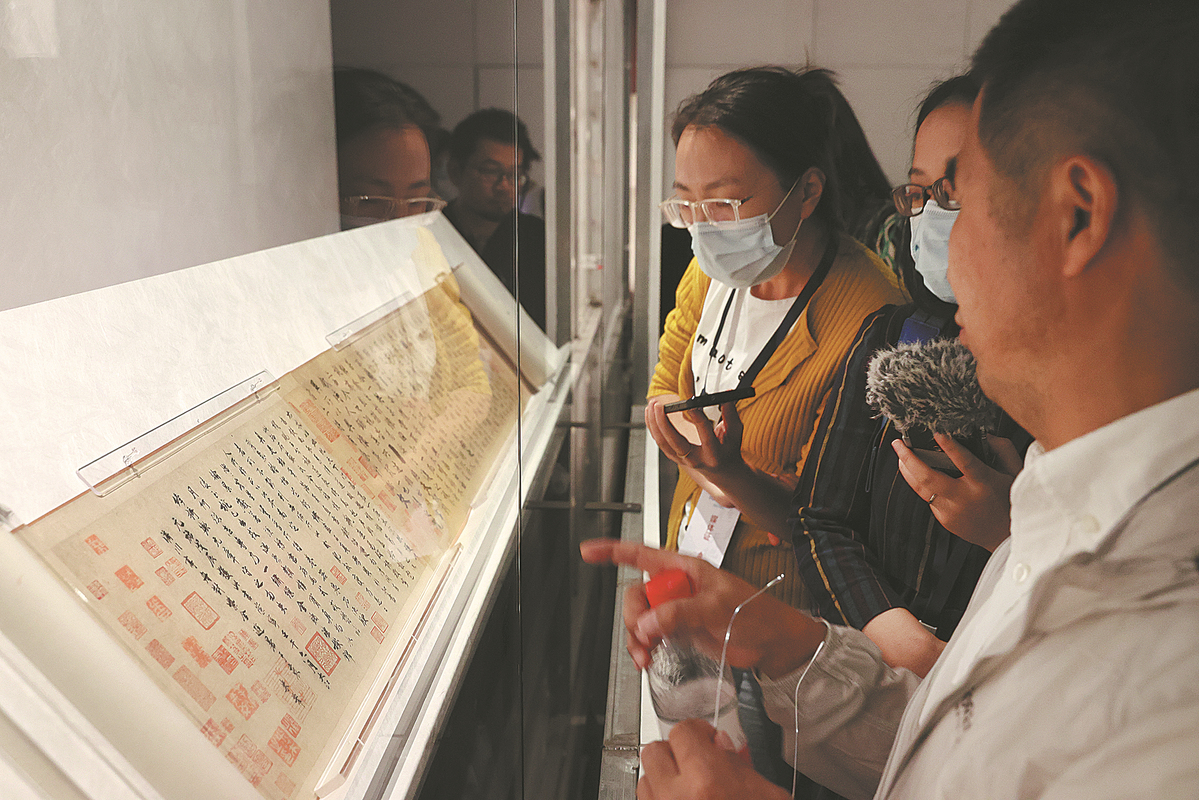Spaces where thought can spring eternal
 0 Comment(s)
0 Comment(s) Print
Print E-mail China Daily, September 6, 2022
E-mail China Daily, September 6, 2022

Cherished areas of creativity may vary in appearance but exhibition shows their common ability to inspire great works.
To create an infinite universe, all that is needed are scrolls of paper, volumes of books and a writing brush. They can reveal a soul dedicated to a metaphysical world and a refined lifestyle.
Generations of ancient Chinese literati knew that a study-be it a shabby thatched shelter with moss growing up its stone walls, or a spacious room equipped with luxurious furniture-could be a place to retreat from the cacophony of the outside world and fully demonstrate the power of thinking.
Stationery, ceramics, paper-based artworks, like paintings and calligraphy, as well as various cultural relics that once accompanied or witnessed the self-cultivation of the ancient literati, may be physical evidence of an adaptable mentality. However, it probably still needs modern visitors to embrace their inner tranquillity to tune into the aura of grace and sentiment.
In Beijing, at the Palace Museum, also known as the Forbidden City, the exhibition Mirroring the Heart of Heaven and Earth: Ideals and Images in the Chinese Study opened to the public last week. Located in the Meridian Gate Galleries, it unveils that literary essence, which has lingered through time.
"A study is not only a space to read, write and collect books," Wang Zilin, curator of the exhibition, says. "It also marks the continuous lineage of culture and reflects a bigger picture of social prosperity."
"The exhibition may reveal an interdependent relationship between the literati and the items in their studies," he explains. "We can think of calligraphy and paintings with strong Chinese characteristics as being 'co-created' by them as well."
Of course, the "Four Treasures of the Study", referring to writing brushes, paper, ink and the inkstone (mortar to grind the ink), are the highlights in the exhibition. Exquisitely manufactured stationery, some items of which were owned by royals, may reflect how devoted the literati were toward their work.
"The literati's philosophical thinking concerning heaven and earth could have also been inspired through other exhibits on show, such as jade and bronzeware," Wang adds.
In ancient China, jade and bronze artifacts bear key roles in traditional rituals of worship and reflect people's views about the universe, Wang says. They are commonly seen in studies, like an exhibited bronze vessel dating back to the Shang Dynasty (c. 16th century-11th century BC), and a Qing Dynasty (1644-1911) jade cong, with a pattern that first appeared more than 5,000 years ago.
4d445196-bf04-4927-9b59-25383c0de07f.jpeg)




Go to Forum >>0 Comment(s)